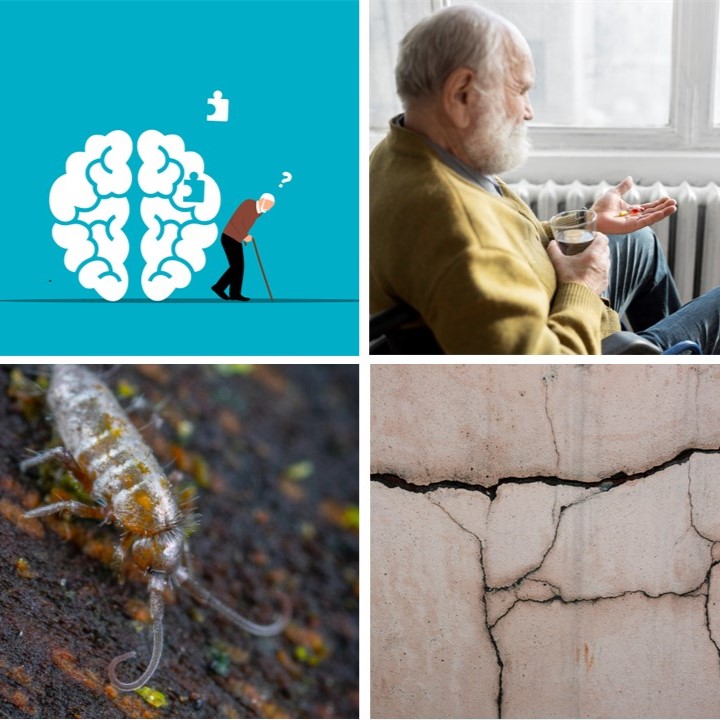10 selected Research Luxembourg results – August 2024
10 September 2024

Luxembourg News in Science & Research
Antioxidants and the Gut; Chiral Giant Atoms; AI predicting Olympics Handball Results; Academic Freedom; Endangered Butterfly Species: here are the latest scientific news from Luxembourg.
Diane Bertel; Pexels; Flickr; Craiyon; Chambre des Députés du Luxembourg
This article was originally in French and German on science.lu
Antioxidants: Their Essential Role in the Intestine
Luxembourg Institute of Health (LIH)
Antioxidants produced by immune cells play an important role in protecting against bacterial infections in the gut. An LIH study shows that in the absence of antioxidants in T cells (a type of immune cell), oxidative stress induced by bacterial infection disrupts the function of mitochondria (the energy-producing centres of the cell).
This phenomenon alters a number of other cellular responses, ultimately leading to a reduction in the production of key immune factors by Th17 cells (another type of immune cell) in response to the infection. Th17 cells support beneficial bacteria in the body and help fight harmful bacteria, making them essential for maintaining a healthy balance of gut flora. In the absence of antioxidants, Th17 cells show a reduced ability to kill a harmful pathogen, resulting in increased damage to the intestinal lining, inflammation and, consequently, a high mortality rate in preclinical models.
These findings have important implications for the treatment of inflammatory bowel diseases such as Crohn’s disease and ulcerative colitis.
To the press release / To the publication
A study highlights the benefits of the “General Practitioner” program for diabetic patients
Luxembourg Institute of Health (LIH) ; Luxembourg Institute of Socio-Economic Research (LISER)
A joint study by LIH and LISER highlights the potential benefits of the General Practitioner programme for people with diabetes. The researchers highlight the need to raise awareness of the programme, which was launched in 2012 but has seen limited uptake.
The General Practitioner programme aims to improve the quality of care by introducing a system where patients voluntarily register with a GP. This doctor monitors the patient’s health needs, coordinates care to improve follow-up and refers patients to other health professionals when necessary. In this way, the role of the GP could help to optimise medication therapy and avoid unnecessary consultations and tests.
The researchers’ study focused on 16,775 patients with type 2 diabetes who were taking oral medication. According to the authors, further studies are needed, including socio-economic characteristics of the patients.
To the press release / To the publication
The Remarkable Properties of Chiral Giant Atoms
Scientists from the Universities of Luxembourg and Ulm have studied artificial atoms called “chiral giant atoms” and how they emit light in a special system called a “waveguide”. They discovered a surprising property: under certain conditions, these atoms can emit light regardless of the distance between the atom’s coupling points and the waveguide.
Giant atoms are artificially created atoms that are connected to a waveguide at different points. A waveguide is a physical system that directs waves, such as light waves, microwaves or other electromagnetic waves, in a specific direction. In physics and engineering, a waveguide is used to control the propagation of waves and minimise energy loss.
This discovery improves our understanding of the physics behind giant atoms and could open up new possibilities for controlling advanced quantum networks.
To the press release / To the publication
A Quarter of Butterfly Species in Luxembourg Are Threatened
National Museum of Natural History (MNHN) ; Luxembourg Institute of Science and Technology (LIST)
This is the finding of a unique atlas entitled “Butterflies in Luxembourg: Distribution, Trends and Conservation”, published by the MNHN. The work documents the diversity, conservation status and distribution of butterflies in Luxembourg. Based on more than 150,000 records collected over the last two centuries, it highlights worrying trends for many butterfly species and emphasises the need for continued conservation efforts.
The IUCN Red List assessment identified 24 of the 91 species assessed as threatened with extinction, including 6 critically endangered species. In addition, 15 species became regionally extinct between 1854 and 2003.
Butterflies are good indicators of biodiversity because they occur in many different habitats. They are also particularly sensitive to climate change, habitat degradation, pesticides and other forms of pollution.
To the press release / To the publication
AI Helped Predict the Handball Results for the 2024 Olympics
Researchers from the University of Luxembourg studied an artificial intelligence model to predict the results of the handball tournament at the 2024 Olympic Games. While the predictions were only partially accurate, the authors were able to extract “important insights into the key factors influencing the outcome of each match”.
The approach combines statistics, deep learning and large-scale language models to predict match results. The model is based on historical data from past matches and takes into account factors such as team composition, match information and statistical characteristics to represent team strengths.
According to the university’s press release, the aim is to make accurate predictions and provide clear, understandable explanations to non-experts in AI, such as coaches, to help teams make informed decisions.
To the press release / To the publication

Nanotubes: A Bridge Between Glial Cells and Neurons
Luxembourg Centre for Systems Biomedicine (LCSB)
Microglial cells, the immune cells that “clean” the brain, connect to neurons via tunneling nanotubes – long extensions that can connect distant cells in the brain. This has been shown in a recent study by the LCSB in collaboration with scientists from the University of Bonn.
Microglial cells use these thin tubes to remove toxic proteins that accumulate inside neurons, thereby contributing to brain health. The findings suggest that this mechanism plays a crucial role in combating neurodegeneration, as aggregates of certain proteins (alpha-synuclein and tau proteins) are responsible for diseases such as Alzheimer’s and Parkinson’s.
These findings may help in the development of therapeutic strategies against neurodegenerative diseases.
To the press release / To the publication
Does Greater Academic Freedom Lead to More Innovation?
A society’s ability to innovate depends on the degree of academic freedom enjoyed by researchers in its institutions. An international team of researchers, including those from the University of Luxembourg, has demonstrated this relationship for the first time: they found that academic freedom has a positive impact on both the number (quantity) and the quality (citations) of patent applications. Academic freedom was measured using indicators from the Academic Freedom Index, which includes freedom of research and teaching, freedom of scientific exchange and dissemination, institutional autonomy, campus integrity, and academic and cultural freedom of expression.
The researchers analysed a sample of 157 countries from 1900 to 2015 to confirm the robustness of the relationship. They checked whether the correlation was really due to academic freedom, rather than general freedom in a society, and ruled out reverse causality – i.e. the possibility that countries with low innovation performance grant more academic freedom.
The study identified the least innovative countries as Saudi Arabia, Iran, China and Turkey, and the most innovative as Austria, Italy, Germany and Sweden. Academic freedom has declined globally over the past decade.
To the press release / To the publication
Luxembourg Tourism in Numbers
What are the latest figures on tourism in the Grand Duchy? STATEC provides its annual answers: In 2023, residents made 3.3 million trips and spent 22 million nights away from home. These figures are at an all-time high. The decline observed in 2020 only lasted as long as the health crisis.
However, business tourism has not yet recovered from the crisis, based on the levels observed in 2019. Residents are travelling less for work as the professional world has shifted to other methods of communication and training, particularly through the use of digital communication tools.
For leisure travel, the majority (52%) was by car. Air travel comes in second with 35%. Trains and buses, considered more environmentally friendly, had little success, accounting for only 10% of trips.
Remarkable Plant Discoveries in Luxembourg
National Museum of Natural History (MNHN)
The MNHN, in collaboration with the Öewersauer Nature Park, has published a new collection of floristic observations from 2022 and 2023 on the biodiversity of Luxembourg. Many new plant species have been catalogued by the researchers, including four potentially invasive species. Some previously recorded invasive species are spreading rapidly.
In this collection, the scientists report the most important findings of vascular plant species observed in Luxembourg in 2022 and 2023. In total, 122 taxa are mentioned. The implementation of national action plans for endangered species and habitats, together with the systematic field work carried out in recent years, has led to the discovery of new sites for endangered and/or protected species.
This research contributes to a better understanding of Luxembourg’s flora, including rare native species and recently arrived species.
To the press release (in French) / To the publication (in French)
A Statistical Portrait of Businesses in Luxembourg
Here are some of STATEC’s key findings on businesses in the Grand Duchy: In 2021, Luxembourg’s market economy will comprise almost 42,000 active companies employing more than 372,000 people. The sector with the highest employment is trade (52,735 employees), followed by construction (51,621 employees) and finance and insurance (45,901 employees).
The most common AI technology used by companies is written language analysis, such as text mining (65%), while machine learning for data analysis ranks second (27%). AI technologies that identify objects or people from images are used by around one in five companies (22%).
Data on commercial cargo flights departing from Luxembourg over the last five years show fluctuating trends. The number of flights increased steadily from 2019 to 2021, but has recently slowed down from 2022 onwards.
Author: Diane Bertel
Editor: Lucie Zeches (FNR) ; Hélène Jacuszin (Research Luxembourg)








